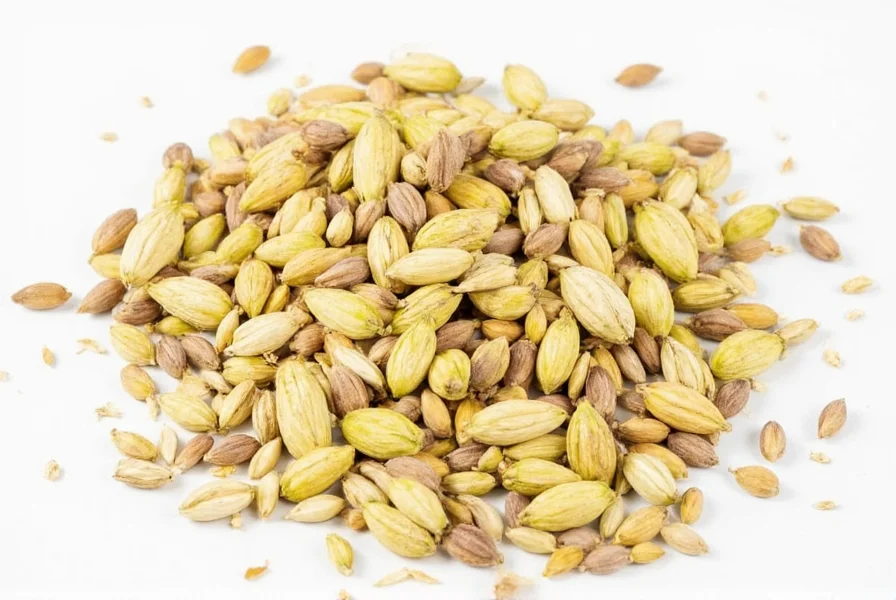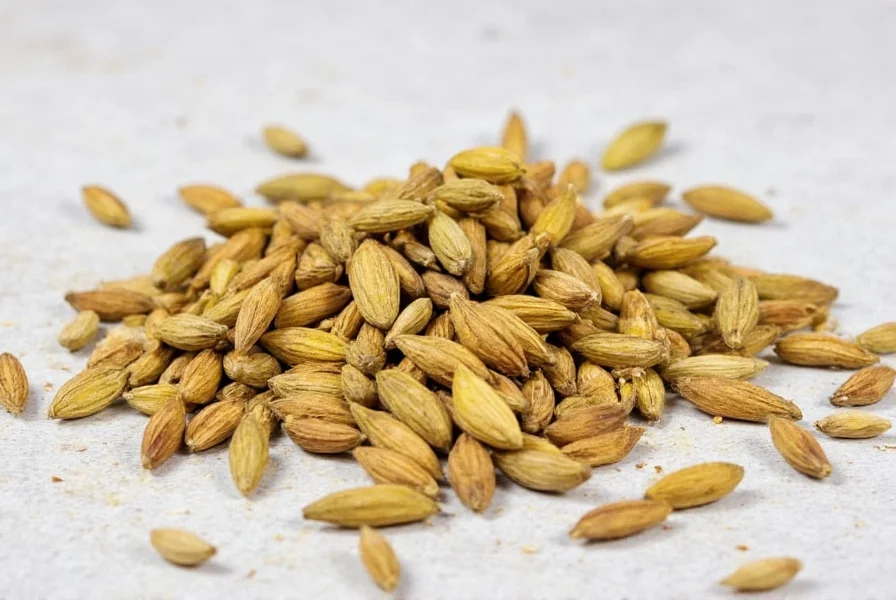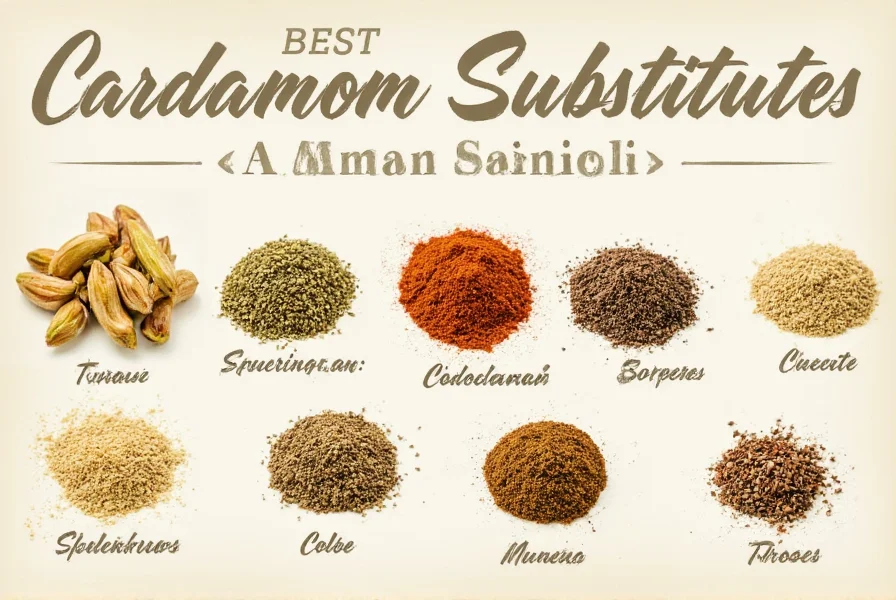If you've ever reached for cardamom only to find your spice jar empty, you're not alone. This expensive, labor-intensive spice remains elusive in many pantries despite its starring role in Scandinavian baking, Indian curries, and Middle Eastern coffee. Understanding effective replacements requires knowing what makes cardamom unique and how different substitutes interact with specific recipes.
Why Cardamom Substitution Is Challenging
Cardamom's complex flavor profile combines citrus, floral, mint, and subtle pepper notes—a signature taste difficult to replicate with single spices. Two main varieties exist:
- Green cardamom (Elettaria cardamomum): Most common globally, with bright, lemony notes
- Black cardamom (Amomum subulatum): Smokier, camphorous flavor used primarily in Indian cuisine
When seeking a cardamom alternative, consider whether your recipe requires the delicate sweetness of green cardamom or the robust smokiness of black varieties. This distinction determines your best replacement strategy.

Top 5 Cardamom Substitutes Ranked by Effectiveness
| Substitute | Best For | Ratio to Replace 1 tsp Cardamom | Flavor Accuracy |
|---|---|---|---|
| Cinnamon-Nutmeg-Cloves Blend | Baking, sweet dishes | 1/2 tsp cinnamon + 1/4 tsp nutmeg + pinch cloves | ★★★★☆ |
| Allspice | Savory dishes, stews | 3/4 tsp allspice | ★★★☆☆ |
| Ginger + Citrus Zest | Coffee, beverages | 1/2 tsp ginger + 1/2 tsp lemon/orange zest | ★★★☆☆ |
| Cardamom Extract | When cardamom is essential | 1/4 tsp extract | ★★★★★ |
| Apple Pie Spice | Quick baking solutions | 1 tsp blend | ★★☆☆☆ |
Detailed Substitution Guide by Application
For Baking (Cookies, Cakes, Breads)
The cinnamon-nutmeg-cloves combination works best as a cardamom replacement in sweet applications. This blend captures cardamom's warmth while approximating its citrus notes through the spice synergy. When substituting in Scandinavian lussekatter (saffron buns) or Finnish pulla, add 1/8 teaspoon ground coriander to enhance floral notes. Remember that pre-ground spices lose potency quickly—always use fresh spices when creating cardamom alternatives.
For Indian and Middle Eastern Curries
Black cardamom's smoky profile requires different substitutes than green cardamom. For biryanis and meat dishes, use 1/2 teaspoon allspice plus 1/4 teaspoon cumin. In Persian gheymeh (lentil stew), combine equal parts cinnamon and coriander. Never use pre-mixed curry powder as a cardamom substitute—it introduces competing flavors that overwhelm the dish's intended profile.
For Coffee and Beverages
When cardamom coffee is on the menu but cardamom isn't available, try this effective replacement: add 1/4 teaspoon freshly grated ginger plus the zest of 1/4 orange to your coffee grounds before brewing. The ginger provides warmth while citrus zest mimics cardamom's bright top notes. For chai tea, use equal parts cinnamon and star anise instead of cardamom pods.

Common Cardamom Substitution Mistakes to Avoid
Many home cooks make these critical errors when seeking cardamom alternatives:
- Using only cinnamon—creates one-dimensional sweetness without cardamom's complexity
- Overusing allspice—allspice contains eugenol (like cloves) which becomes medicinal in excess
- Ignoring freshness—stale substitutes compound flavor inaccuracies
- Not adjusting for dish type—using baking substitutes in savory applications
Professional chefs recommend making small test batches when experimenting with cardamom replacements. Taste as you go—cardamom's potency means even 1/8 teaspoon difference can make or break a dish.
Creating Your Own Cardamom Substitute Blend
For consistent results across multiple recipes, prepare this versatile cardamom replacement blend:
- Mix 2 tablespoons ground cinnamon, 1 tablespoon ground nutmeg, and 2 teaspoons ground cloves
- Add 1 teaspoon ground coriander for floral enhancement
- Store in an airtight container away from light
- Use 3/4 teaspoon of this blend per 1 teaspoon cardamom required
This blend maintains quality for 2-3 months when stored properly. For stronger cardamom flavor in Scandinavian baking, add 1/2 teaspoon ground green cardamom pods if available (even small amounts enhance the blend).
When to Seek Cardamom Alternatives
Consider these practical scenarios where cardamom substitutes become necessary:
- Running out mid-recipe (most common emergency substitution scenario)
- Cardamom allergy or sensitivity concerns
- Regional availability issues (cardamom remains expensive in many markets)
- Cost considerations for large-batch cooking
- Dietary restrictions requiring spice modification
Understanding these contexts helps determine how closely your substitute must match authentic cardamom flavor. For everyday baking, approximate substitutes work well, but traditional recipes like Swedish knäck (pepparkakor) benefit from more precise flavor matching.
Frequently Asked Questions
Can I use pumpkin pie spice instead of cardamom?
Yes, but with limitations. Pumpkin pie spice contains cinnamon, ginger, nutmeg, and cloves—similar to cardamom's profile—but often includes allspice and sometimes pepper. Use 3/4 teaspoon pumpkin pie spice per 1 teaspoon cardamom, but avoid in delicate recipes like cardamom buns where competing flavors become noticeable.
What's the best cardamom substitute for chai tea?
For chai tea, combine equal parts cinnamon and star anise as your primary cardamom replacement. Add a single clove per serving to enhance complexity without overwhelming the tea. This combination mimics cardamom's warmth while maintaining chai's traditional flavor balance better than single-spice alternatives.
How do I substitute cardamom in biryani?
For biryani, use 1/2 teaspoon allspice plus 1/4 teaspoon cumin to replace black cardamom's smoky notes. If making vegetable biryani where green cardamom is featured, substitute with equal parts cinnamon and coriander. Always add substitutes early in cooking to allow flavors to meld, and never exceed 3/4 teaspoon total substitute per cup of rice.
Can I use cardamom extract as a replacement?
Cardamom extract makes an excellent concentrated replacement. Use 1/4 teaspoon extract per 1 teaspoon ground cardamom. Since extracts are potent, add gradually and taste as you go. This works particularly well in baking where liquid content won't affect recipe chemistry. Note that pure cardamom extract remains difficult to find—check specialty baking stores.
Why does my cardamom substitute taste bitter?
Bitterness usually comes from overusing cloves or allspice, both containing eugenol which turns medicinal in excess. Reduce clove content by half and add 1/8 teaspoon cinnamon to balance. Also check spice freshness—stale spices develop bitter notes. For immediate correction, add 1/4 teaspoon honey or maple syrup to counteract bitterness in sauces and beverages.











 浙公网安备
33010002000092号
浙公网安备
33010002000092号 浙B2-20120091-4
浙B2-20120091-4